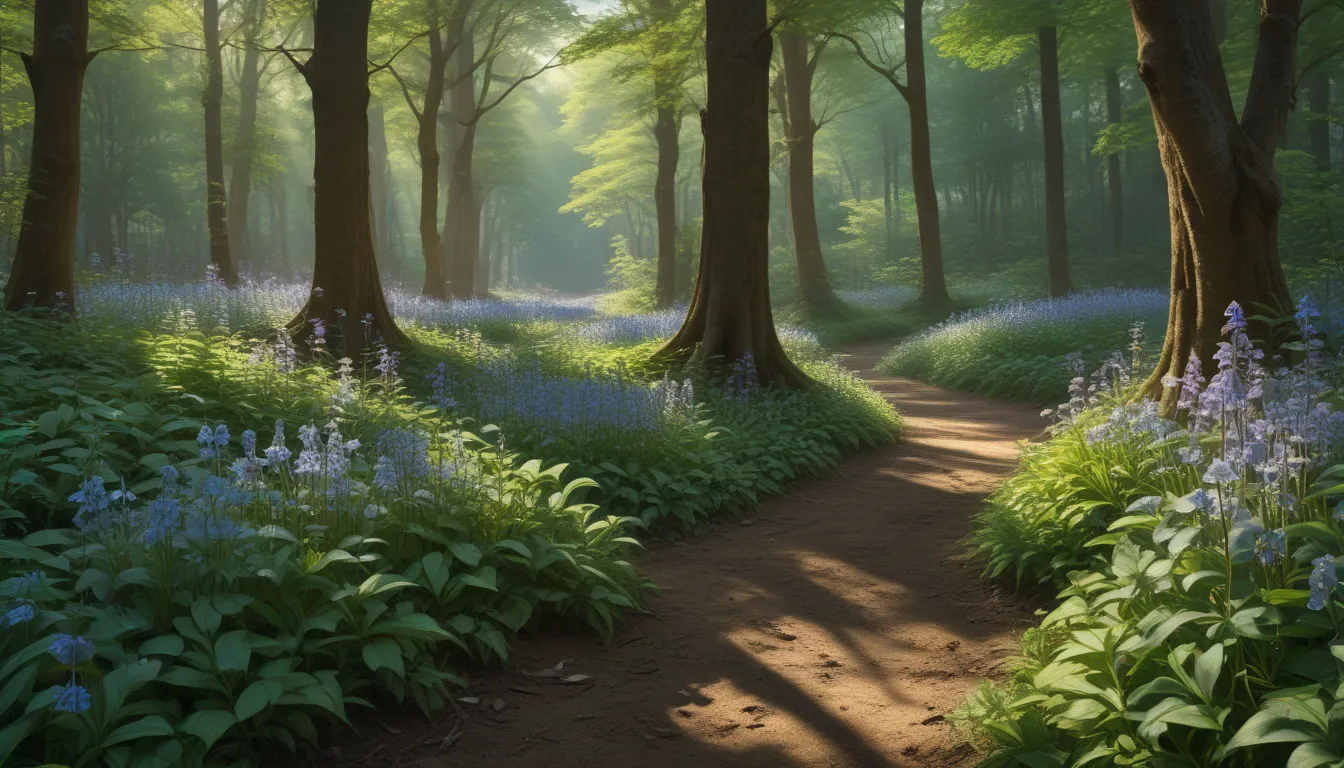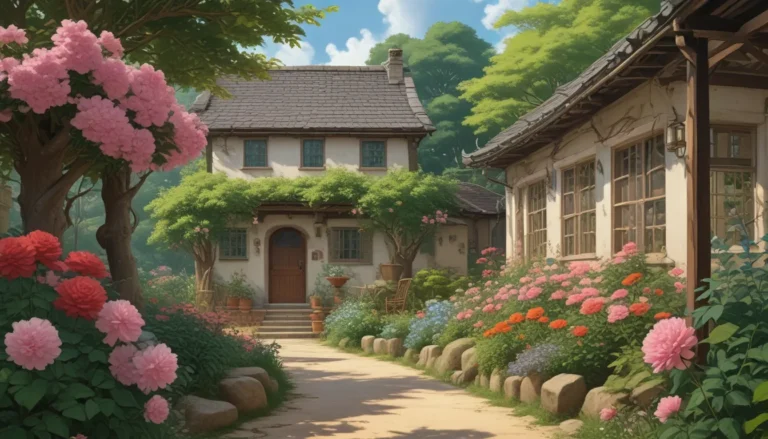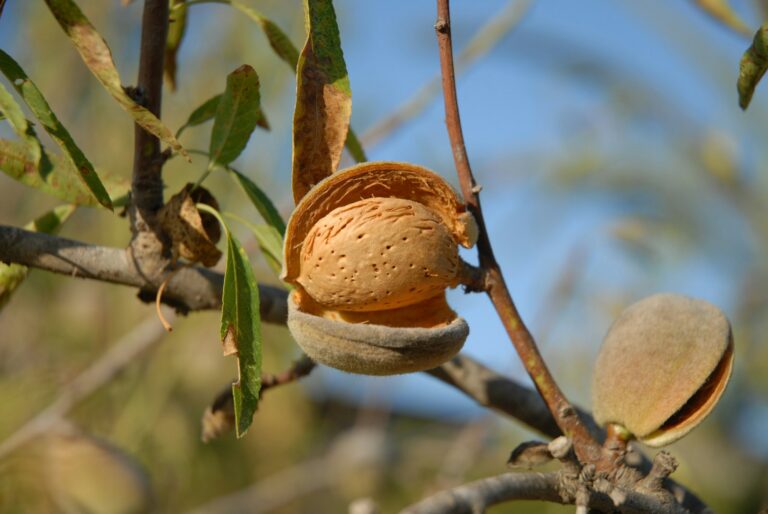The Ultimate Guide to Growing and Caring for Virginia Bluebells: Mertensia virginica

Welcome to the wonderful world of Virginia bluebells! Also known as gentlemen’s breeches or old ladies’ bonnets, these stunning blue and pink flowers are a true delight in any garden. In this comprehensive guide, we’ll cover everything you need to know about cultivating and caring for these North American natives.
What You’ll Learn
Today, we’re going to delve into the fascinating world of Virginia bluebells. Here’s a sneak peek of what you can expect to learn in this guide:
- Cultivation and History
- Propagation
- How to Grow
- Growing Tips
- Pruning and Maintenance
- Where to Buy
- Managing Pests and Disease
- Best Uses
- Quick Reference Growing Guide
Are you ready to discover the secrets of this beautiful plant? Let’s get started!
Cultivation and History
Virginia bluebells, scientifically known as Mertensia virginica, are native to Eastern North America and belong to the borage family. Despite their various common names, these charming flowers have a rich history dating back to the time of Linnaeus, the father of modern taxonomy.
Originally named Pulmonaria, Virginia bluebells were later reclassified as Mertensia, after the German botanist Franz Carl Mertens. With their blue-green leaves and vibrant pink buds, these flowers have captured the hearts of many native plant enthusiasts.
The Cherokee and Iroquois people used Virginia bluebells for medicinal purposes, adding to the plant’s cultural significance. But enough about history – let’s dive into the practical aspects of growing these beauties.
Virginia Bluebell Plant Propagation
When it comes to propagating Virginia bluebells, you have several options at your disposal. From seed collection to division and purchasing existing plants, there are multiple ways to add these lovely flowers to your garden.
From Seed
Seeds are a popular choice for propagating Virginia bluebells. These plants require a period of cold stratification to germinate, so be patient as you wait for them to bloom.
To sow the seeds, prepare the soil, and ensure it is kept moist throughout the germination process. Refrigeration can also help accelerate the cold stratification process.
By Division
If you’re looking to create a mass planting of bluebells, division is another viable option. While these plants prefer to be left undisturbed, dividing them can help spread their beauty throughout your garden.
When dividing the plants, pay close attention to the rhizomes and ensure each division has its own node. This will help the new plants establish themselves more easily.
Transplanting
For planting purchased or propagated plants, choose early spring or fall to ensure optimal growth. Prepare the soil by amending it with compost and ensure the plants are watered sufficiently post-transplantation.
How to Grow Virginia Bluebell Flowers
Virginia bluebells thrive in part to full shade and rich, well-draining soil. Mimicking their natural habitat in woodlands and floodplains will ensure their success in your garden.
Maintaining adequate moisture levels is crucial for the growth of these flowers. Regular watering and occasional mulching will help keep the soil moist and fertile throughout the growing season.
Growing Tips
To ensure your Virginia bluebells flourish, follow these simple tips:
- Plant in part to full shade
- Use rich soils or amend poor soils with compost
- Keep the soil moist but avoid overwatering
By following these guidelines, you’ll set your bluebells up for success and enjoy a vibrant display of color in your garden.
Pruning and Maintenance
While Virginia bluebells are relatively low-maintenance, deadheading and occasional tidying can help enhance their appearance. Additionally, companion planting with ferns, hostas, or hellebores can complement the bluebells and mask any dying foliage.
By applying a layer of leaf mulch in the fall, you’ll enrich the soil and ensure optimal growing conditions for the following season.
Where to Buy Virginia Bluebell Bulbs
If you’re looking to purchase Virginia bluebells, local plant nurseries and online retailers offer a range of options. Whether you opt for seeds, bare root stock, or established plants, you can easily find these lovely flowers for your garden.
Nature Hills Nursery is a reliable source for acquiring Virginia bluebell bulbs and plants, offering high-quality products for your gardening needs.
Managing Pests and Disease
One of the benefits of growing Virginia bluebells is their resilience to pests and diseases. These flowers are deer and rabbit resistant, making them an excellent choice for gardens prone to wildlife damage.
To prevent root rot, ensure your plants are located in well-draining soil and avoid overwatering, especially during rainy periods. By monitoring soil moisture levels and providing adequate drainage, you can maintain the health of your bluebells.
Best Uses for Virginia Bluebell Flowers
Virginia bluebells are ideal for shady areas and woodland gardens, where they can create stunning displays of color. Whether planted en masse under trees or mixed with other spring bulbs, these flowers add a touch of elegance to any landscape.
Consider adding Virginia bluebells to wildflower gardens, native plantings, or mixed borders for a vibrant burst of color in early spring.
Quick Reference Growing Guide
To wrap up our guide, here’s a quick reference for growing Virginia bluebells:
- Plant Type: Flowering herbaceous perennial
- Flower/Foliage Color: Pink buds, blue flowers/green
- Native to: Eastern North America
- Maintenance: Low
- Hardiness (USDA Zone): 3-8
- Tolerance: Deer, rabbits
- Bloom Time: March-April
- Spacing: 10-18 inches
- Height: 18-24 inches
- Spread: 12-18 inches
- Water Needs: Medium to high
By following these guidelines, you’ll be well-equipped to cultivate thriving Virginia bluebells in your garden.
My Name is Bluebell… Virginia Bluebell
Virginia bluebells are truly a unique and delightful addition to any garden. With their captivating colors and easygoing nature, these flowers are a joy to grow and care for.
Whether you’re an experienced gardener or a novice enthusiast, Virginia bluebells offer a rewarding growing experience. By following the tips and techniques outlined in this guide, you’ll be well on your way to cultivating a beautiful display of blue and pink blooms in your garden.
Share your experiences with growing Virginia bluebells in the comments below. Have you already planted them, or are you planning to add them to your garden soon? Let us know, and happy gardening!
In conclusion, growing and caring for Virginia bluebells is a rewarding experience that will bring beauty and color to your garden. Whether you’re a seasoned gardener or a beginner, these versatile flowers are sure to enrich your outdoor space. Follow the tips and guidelines outlined in this guide to ensure a successful growing season for your Virginia bluebells. Happy gardening!





